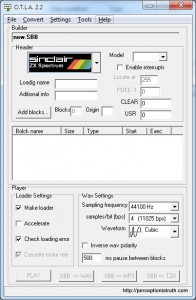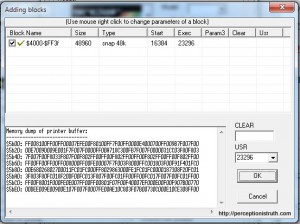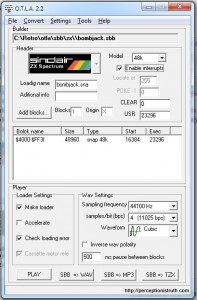 Buying second hand stuff always carries a bit of risk. Buying second hand electronics which are 30 years old, and notoriously troublesome even when brand new is something you have to go into with your eyes open. I’m not stupid, so when someone on eBay says ‘fully working’ I take it with a pinch of salt (good job too). I knew that I was going to have to properly test the Spectrums.
Buying second hand stuff always carries a bit of risk. Buying second hand electronics which are 30 years old, and notoriously troublesome even when brand new is something you have to go into with your eyes open. I’m not stupid, so when someone on eBay says ‘fully working’ I take it with a pinch of salt (good job too). I knew that I was going to have to properly test the Spectrums.
I also wanted to actually play a game, since I’d had them for a couple of weeks, so combining the two seemed to make sense. I already knew one of them was a non-starter since the keyboard membrane is screwed, and the P and Enter keys don’t work (so you can’t even type LOAD “” and hit enter!), but there were still 2 with which I could have a go. I was wondering how to actually load some games, which led to this post.
Essentially, Spectrum games (and other cassette based games from the same era) are sound recordings of binary data (1’s and 0’s). It goes without saying, therefore, that anything which can play sound, should in theory be able to provide a source for the Spectrum to load games from. I had expected to use a little walkman style player we have, but the MP3 option seemed even better (and geekier, nerdier and more mind blowing).
I used the same process as the guy who’s article I found for converting the tape files to MP3. The software isn’t exactly intuitive, and Windows 7 adds some excitement, but the basic process is (for Windows)
- Go to the Project OTLA homepage (here)
- Get the latest version of OTLA (from here)
- Unzip it somewhere easy to use, and avoid spaces in directory names
- Run otla.exe, you’ll get this screen,

- At this point, I had to guess how to proceed, but you basically choose File | New+Add. You’ll get the file dialog, and you then locate the file you want to convert. OTLA will read .tap, .tzx, .z80, .sna, .scr, and .dsk files as well as it’s own .sbb.
- OTLA will then ask you which blocks to include. I just guessed. For my Bomb Jack .sna file there’s only one block and it’s already added, for my Manic Miner .tzx file, there are three, with two already ticked. I can’t tell you what to tick, just have a play and see what works! Here’s the screen for Bomb Jack,

Choose OK once you’ve guessed at what to do. - OTLA will then populate the main screen with some options, but default, I get this,

but you might get something different. Again, I can’t explain what all those options do. I’m not worried about how long it takes the games to load, so I unticked Accelerate, and eventually, samples/bit of 4 worked best. Make sure you choose the right Model, and I had to enable interrupts to get Bomb Jack to work. - Click SBB => MP3 and off you go.
Once you’ve got the MP3, you can play it from just about anything with an audio jack. I did this first with Manic Miner and then today, with Bomb Jack. Here’s the fun I had with Manic Miner though.
- The audio cable I have (came with the ‘fully working’ Spectrum), only the black audio jack works, the grey one doesn’t. That took me 10 minutes of messing about to diagnose. I was trying to play the MP3 via my iPhone and I knew I should be able to hear it being played through the Spectrum speaker, but couldn’t. I assumed I had volume issues. Ten minutes later I tried the other jack and I could hear it instantly. So, problem solved.
- I tried three times to load the game on one of the Spectrums, and every time it just crashed and hard reset. I recreated the Manic Miner MP3 a couple of times with different settings, but nothing helped. Eventually I gave up and tried the other Spectrum that had a working keyboard and it loaded first time. Much joy! I played it for a bit, then went back to the first Spectrum – hard reset. Then I had an epiphany 30 years in the making. Can you believe that I remember from the days when my cousin had a 16k Spectrum, that the default behaviour when you tried to load a 48k on a 16k Spectrum was a hard reset? I whipped out the ‘how to check how much memory your Spectrum has’ code (see a later blog post), and sure enough, one of my 48k Spectrums is actually only a 16k Spectrum. From my reading of the output, it’s not a fault, it’s a factory condition.
After all that messing about, I was still pretty much ecstatic after playing Manic Miner, in blur-o-vision, on a Spectrum with a faceplate peeling off, despite having found out one of my Spectrums was oversold and the audio cable I had was dodgy.
Ah, the joys of retro gaming.
